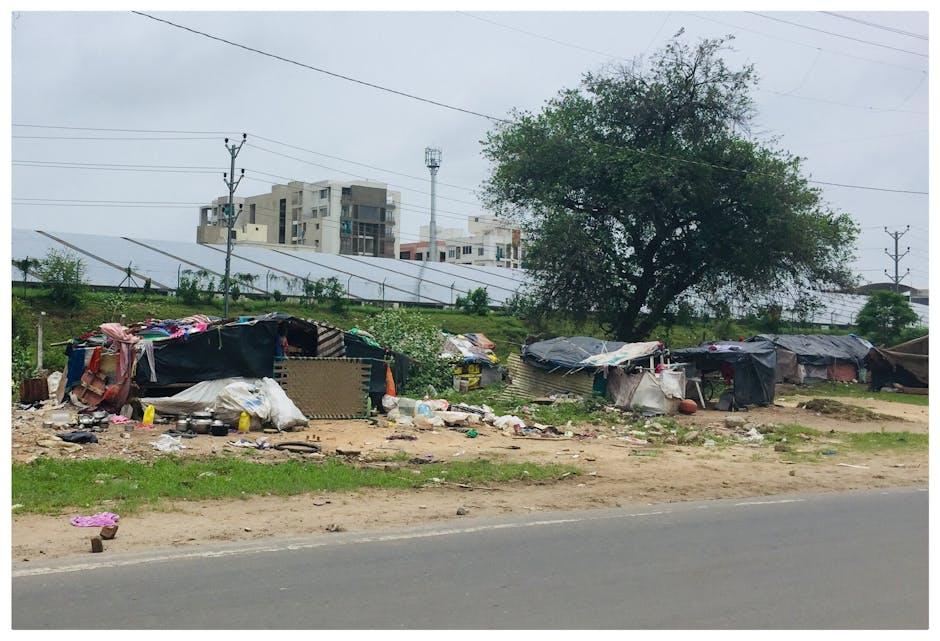In an era where the sun’s rays are not only a source of warmth but also a beacon of sustainable energy, homeowners are increasingly drawn to the promise of solar power. Yet, for many, the path to harnessing this abundant resource is fraught with challenges—installation costs, roof suitability, and the complexities of maintenance can cast shadows on the dream of solar independence. Enter community solar programs, an innovative solution that offers a different way to access solar energy without the traditional hurdles. But as with any emerging concept, the question arises: are these programs truly a good fit for homeowners? This article delves into the intricacies of community solar, exploring its benefits and potential drawbacks, and aims to illuminate whether this shared approach to solar energy is the right choice for the modern homeowner.
Understanding Community Solar: A New Dawn for Homeowners
Community solar programs offer a promising alternative for homeowners looking to embrace renewable energy without the need for individual solar panel installations. These programs allow participants to buy or lease a share of a larger solar farm, effectively reducing their carbon footprint and energy costs. But is this model suitable for every homeowner? Here are some key points to consider:
- Flexibility: Unlike traditional solar installations, community solar doesn’t require homeowners to modify their roofs or properties. This makes it an ideal option for those who rent or have shaded rooftops.
- Cost Savings: Participants often see a reduction in their electricity bills. However, savings can vary based on location, utility rates, and the specific terms of the program.
- Commitment Level: Some programs require long-term commitments, while others offer more flexibility. It’s crucial to understand the terms before enrolling.
- Availability: These programs are not yet available everywhere, so homeowners should check local options.
Community solar can be a great fit for homeowners who value sustainability and want to reduce their reliance on fossil fuels without the upfront costs and maintenance of personal solar systems. However, it’s important to thoroughly research and consider the specific offerings in your area to ensure it aligns with your financial and environmental goals.

Evaluating the Financial Benefits and Challenges of Community Solar
Homeowners exploring the potential of community solar programs often encounter a blend of financial advantages and hurdles. On the plus side, these programs offer cost savings through reduced energy bills, as participants typically receive credits for their share of the solar power generated. This can be particularly beneficial for those who cannot install solar panels on their own properties due to structural or financial constraints. Additionally, community solar often involves minimal upfront investment, making it more accessible than traditional rooftop solar installations. By participating, homeowners also contribute to a cleaner environment, enhancing their sustainability profile without the need for direct ownership of solar panels.
However, there are challenges to consider. Availability is a significant factor; community solar projects might not be widespread or accessible in every region, limiting options for interested homeowners. Furthermore, the terms and conditions of participation can vary widely, with some programs requiring long-term commitments or presenting complex contractual agreements that may not suit everyone. Another potential downside is the variability of savings, as the amount credited can fluctuate based on factors like solar production levels and energy market prices. Homeowners must carefully weigh these elements to determine if community solar aligns with their financial goals and lifestyle needs.

Environmental Impact: How Community Solar Contributes to a Greener Future
Community solar programs are transforming the way we think about energy production and consumption, playing a pivotal role in reducing our carbon footprint. By enabling multiple households to share the benefits of a single solar installation, these programs not only democratize access to renewable energy but also significantly reduce the reliance on fossil fuels. This collaborative approach to energy production offers numerous environmental benefits, including:
- Reduced greenhouse gas emissions: By shifting to solar power, communities can cut down on the harmful emissions that contribute to climate change.
- Decreased air and water pollution: Solar energy production generates minimal pollutants compared to traditional energy sources.
- Conservation of natural resources: By harnessing the power of the sun, community solar helps in preserving finite resources like coal and natural gas.
These programs encourage sustainable living and foster a sense of environmental stewardship among participants. By investing in community solar, homeowners not only contribute to a cleaner planet but also set a precedent for future generations to prioritize eco-friendly solutions.

Making the Decision: Is Community Solar Right for Your Home?
When considering the integration of community solar into your household energy mix, there are several factors to weigh. Community solar programs offer an innovative way to access renewable energy without the need for personal solar panel installation. This can be particularly beneficial for homeowners who face obstacles like roof space limitations, shading issues, or financial constraints that prevent the adoption of traditional solar systems.
Here are a few points to ponder when deciding if this option suits your needs:
- Cost Savings: Community solar can lead to reduced energy bills as it often provides electricity at a lower rate compared to conventional utility services.
- Flexibility: Unlike individual solar installations, community solar subscriptions can be more flexible, allowing you to move within the same utility area without losing access to solar benefits.
- Environmental Impact: Participating in community solar helps increase the share of renewable energy in the grid, contributing to a reduction in carbon footprint.
Assessing these aspects can help determine if community solar aligns with your energy goals and lifestyle preferences.
In Summary
In the ever-evolving landscape of renewable energy, community solar programs stand as a testament to innovation and collaboration, offering homeowners a promising path to sustainability. As we peel back the layers of these initiatives, it becomes clear that their potential extends far beyond mere cost savings. They represent a shift in how we think about energy—encouraging a shared responsibility and a collective investment in our planet’s future.
Whether community solar programs are a good fit for homeowners ultimately depends on individual circumstances, local regulations, and personal priorities. Yet, they undeniably offer a gateway for many to step into the world of clean energy without the need for rooftop panels or hefty investments. As we navigate the complexities of energy choices, these programs invite us to reconsider our role in the energy ecosystem and inspire us to explore new avenues toward a greener tomorrow.
the decision to join a community solar program is not just about immediate benefits. It’s a choice that resonates with broader themes of community empowerment and environmental stewardship. As we close this chapter, the sun continues to shine on opportunities for sustainable living, leaving us with a question not of whether we can afford to participate, but rather, can we afford not to?

































